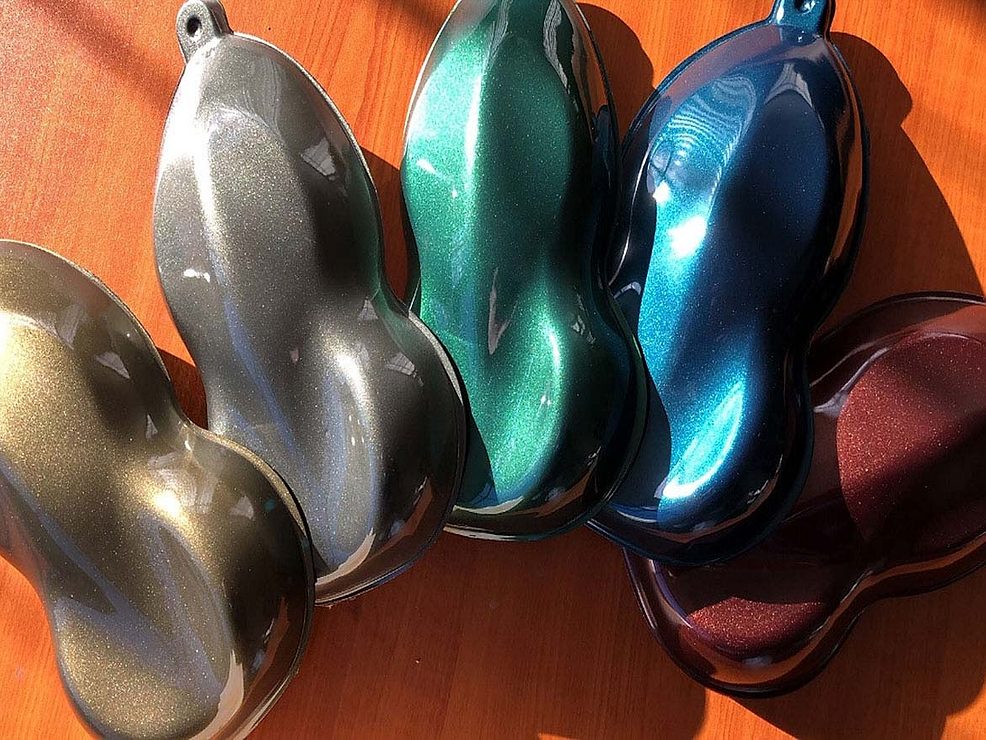I know what orange peel is when I see it, but what causes it?
--Priscilla
Hello Priscilla,
Orange peel is the characteristic texture found in some powder coatings that approximates the surface of - you guessed it - an orange. It’s not a dry sandpaper surface, nor is it the relatively tight texture of a hammertone.
So what leads to orange peel? Here’s a rundown of the causes:
- Resin viscosity. The resins used in powder formulas are obviously solid, and they possess a specific melt viscosity that influences how smooth the final coating will be. A low melt viscosity produces smoother coatings.
- Pigment loading. The melt viscosity of the powder coating will be affected by how much pigment is incorporated into the formula. High levels of pigment will produce more orange peel. It is more difficult to avoid orange peel with some colors. For example, yellows in particular typically need high levels of pigment to achieve acceptable opacity or hiding, and therefore can exhibit more orange peel. Low-cost formulas can be highly loaded with extender pigments and might exhibit orange peel.
- Particle size distribution. Larger particles require more energy to melt and flow; consequently they can cause orange peel. Remember that powders typically are applied at 1.5 to 3.0 mils (38 to 75 microns), and therefore powder particles larger than 75 microns can create more orange peel.
- Film thickness. Thinner films (less than 2.0 mils, or 50 microns) will be more textured due to the particle size of a typical powder ranging from about 10 microns to 75 microns or more. Excessively thick coatings also can result in orange peel. Film builds over 5.0 mils (125 microns) sometimes begin to build excessive electrostatic charge (back ionization), which results in an uneven surface that interrupts melt flow as the powder is baked.
- Cure rate. Faster-curing powder coatings have less time to flow and level in the oven. If the melt viscosity of the resin is not adjusted to compensate for a faster curing, then orange peel can result. Furthermore, some fast-cure powders age (advance chemically) over time. This can result in a restriction in flow that causes orange peel.
- Poor grounding of parts. This allows for excessive charge buildup on the part, which can cause back ionization at lower-than-expected film builds.
***********************
Hello Joe,
Can a decorative steel powder-coated insert work in an outside fence made of pressure-treated lumber?
--Joe Pozeg
Dear Joe,
There are at least a couple of issues to consider. First, will the powder hold up against the outdoor elements? Additionally, will the powder hold up against the nasty chemicals that are present in the pressure-treated board?
As for the first question, the powder will resist fading, chalking and corrosion if it is a good-quality polyester or polyurethane powder. Hybrids and epoxies will chalk and fade if exposed to sunlight.
Regarding the second question, yes, the powder probably will resist the pressure treatment chemicals. But it’s important to ensure that the steel is clean and preferably chemically pretreated before it is powder coated. Unclean steel will compromise adhesion and corrosion resistance. Pretreatment (using iron phosphate or zinc phosphate) will enhance adhesion and corrosion resistance even more. You also have to ensure 100% coverage of the steel. Voids in the coating make excellent sites to propagate corrosion.
***********************
Ask Joe Powder is a regular feature of Finishing Today magazine. Please send your questions to askjoepowder@yahoo.com.



